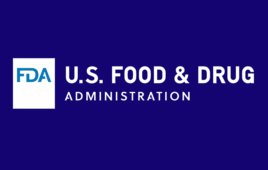
Tina Barrett, product steward and regulatory representative, Eastman Chemical [Image from Eastman]
The regulatory space for medical devices is always evolving. Manufacturers have to keep up not only with FDA regulations, but other countries’ rules not to mention keeping track of Brexit, U.K.’s pending departure from the European Union. As product steward and regulatory representative at Eastman Chemical in Kingsport, Tenn., it’s Tina Barrett’s responsibility to keep up with all of those changes.
“The government agencies will send out news blasts. I get quite a few a day from the FDA,” Barrett told Medical Design & Outsourcing. “And then there are some European newsletters. By getting those daily emails, I go through them every day to review and see what the changes are and if those are relevant to us or not. There are some really great medical device-focused consulting groups that will host webinars where they’ll have subject matter experts from the industry go through the changes in regulations, as well, and what those mean. The FDA also does a really great job of putting on webinars that are informational to explain things as well. Attending those gives a good introduction to the changes.”
It’s hard to talk about regulatory changes these days without bringing up Brexit. In a 2016 referendum, 52% of voters approved leaving the EU. Originally slated to take effect March 29, it’s been delayed twice after Parliament rejected proposed deals due to concerns about how to handle the border with Northern Ireland, which would remain in the EU.
A “no-deal Brexit,” in which the U.K. leaves the EU with no agreements in place, would leave intact the single market and customs union agreements governing trade between EU members and eliminate the checks and tariffs imposed on imports. An abrupt end to the trade relationship with the U.K. and EU nations could result in delays of up to six months for medical devices at the border, according to the Association for the Advancement of Medical Instrumentation.
“Brexit is still a little bit of the great unknown,” Barrett said. “It’s my understanding that, for the most part, they are going to continue to be aligned with a lot of the policies that the EU has right now. They have made that statement on environmental policies, which means that they will be keeping some of those European legislations and basically mirroring that.”
Most of the regulatory changes that keep popping up now are EU Medical Device Regulation-related, she explained. New EU MDR rules, which regulate production and distribution of CE-marked medical devices and ensure compliance, are set to take effect in May 2020.
“The manufacturers are looking to get ahead of that,” Barrett told us. “What I’m seeing in an increase in requests for detailed information that will be included as part of their technical file for submission in the EU.”
That involves traceability requirements including a detailed report that tracks the manufacturing process from the raw material supplier through post-market surveillance. The EU traceability regulations were imposed after a silicone breast implant scandal in Europe. A French company’s implants incurred significantly higher rupture rates than sealed implants; it was later discovered that the company was using industrial-grade silicone in the implants. EU regulators traced the problem all the way back to the raw material.
“Companies are now required to have that increased scrutiny on suppliers. They’re going to have an increased scrutiny on their applications to the notified bodies and to the competent authorities,” Barrett said. “And then, even after a device is put on the market in the EU, they’ll have additional requirements for post-market surveillance, so that if something happens with a patient it’s easy to trace that back to understand where the problem was and identify it to mitigate any additional risk.”
Any change in regulation could slow medical device production as companies try to adapt their processes to the new rule. Barrett said there are two steps to tackling the changes: Figure out where you deviate from the new regulation and then communicate the new processes to the relevant groups.
“The first step is always to do a gap analysis to take a look at what we are doing currently and what are the new rules, where do we meet them and where are the big control changes that we may need to address with different policies or procedures,” she said. “After that, we would roll it out to the various groups that might be affected. It could be quality assurance, it could be manufacturing, it could be marketing. It just depends on which group might have an action item that comes out of that gap analysis.”



